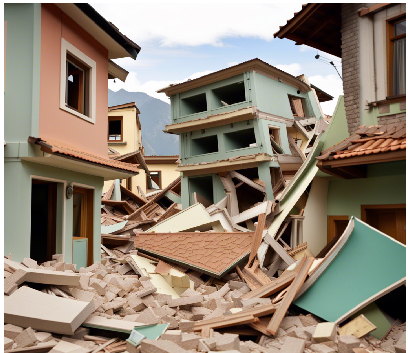We love Southern California. It is renowned for its beautiful landscapes, sunny weather, and vibrant culture. However, beneath its picturesque surface lies one of the most active seismic zones in the world. Understanding the earthquake risks in this region is crucial for residents, policymakers, and anyone involved in urban planning and emergency preparedness.
The past decades have seen notable seismic events that have shaped our understanding of earthquake risks in Southern California. Here are some of the significant earthquakes:
Northridge Earthquake: January 17, 1994 – Magnitude: 6.7
Impact: This earthquake caused widespread damage in the San Fernando Valley and surrounding areas, leading to the loss of 57 lives and causing billions in property damage. It was a wake-up call that highlighted the region’s vulnerability and led to major revisions in building codes and emergency preparedness.
Hector Mine Earthquake: October 16, 1999- Magnitude: 7.1
Impact: Occurring in the Mojave Desert, this earthquake caused relatively minor damage due to its remote location. However, it was felt widely and served as a reminder of the potential for large earthquakes in less densely populated areas.
Ridgecrest Earthquakes: July 4, 5, 2019- Magnitudes: 6.4 and 7.1
Impact: These twin earthquakes struck the Ridgecrest area in quick succession, causing significant structural damage and highlighting the importance of preparedness even in sparsely populated regions. The second quake was the strongest in Southern California in 20 years.
San Fernando Earthquake: February 9, 1971- Magnitude: 6.6
Also known as the Sylmar earthquake, this one caused extensive damage and led to the deaths of 64 people. It prompted significant changes in seismic safety regulations, including the retrofitting of hospitals and other critical infrastructure.
Understanding Southern California’s Seismic Risks
Southern California sits atop the Pacific and North American tectonic plates, making it a hotspot for earthquake activity. The San Andreas Fault, which runs through much of the region, is one of the most well-known fault lines and is capable of producing devastating earthquakes. Other significant fault lines include the Newport-Inglewood, the Garlock, and the Elsinore Faults.
Our dense population and extensive infrastructure make it particularly vulnerable to big earthquakes.
Preparing for the Next Big One
As individuals, we cannot predict when the next major earthquake will strike, but we can take steps to prepare for it:
• Create an Emergency Plan: Ensure all loved ones know what to do before, during, and after an earthquake. Create a step-by-step communication plan.
• Build an Emergency Kit: Include essentials such as water, non-perishable food, medications, flashlights, and first-aid supplies.
• Neighborhood Preparedness: Talk with your neighbors, setup, and participate in neighborhood earthquake drills, neighborhood emergency response training.
• Stay Informed: Follow updates from the U.S. Geological Survey (USGS), Sign up for earthquake alerts through services like ShakeAlert, and local authorities regarding seismic activity and safety recommendations.
• Emergency Power: Have an emergency power source that does not depend on the Electric Grid or Utilities; including long term battery storage or an Emergency Standby Dual Fuel Generator (they can run on Natural gas and Propane).
• Secure Your Space: Anchor heavy furniture, water heaters, and other large items to walls to prevent them from toppling.
*Remember that a standby generator should be just one component of a comprehensive emergency backup plan. It’s also crucial to have emergency supplies, such as food, water, first aid kits, and a communication plan in place. Stay informed about local emergency protocols and follow the guidance provided by local authorities and emergency management agencies.
